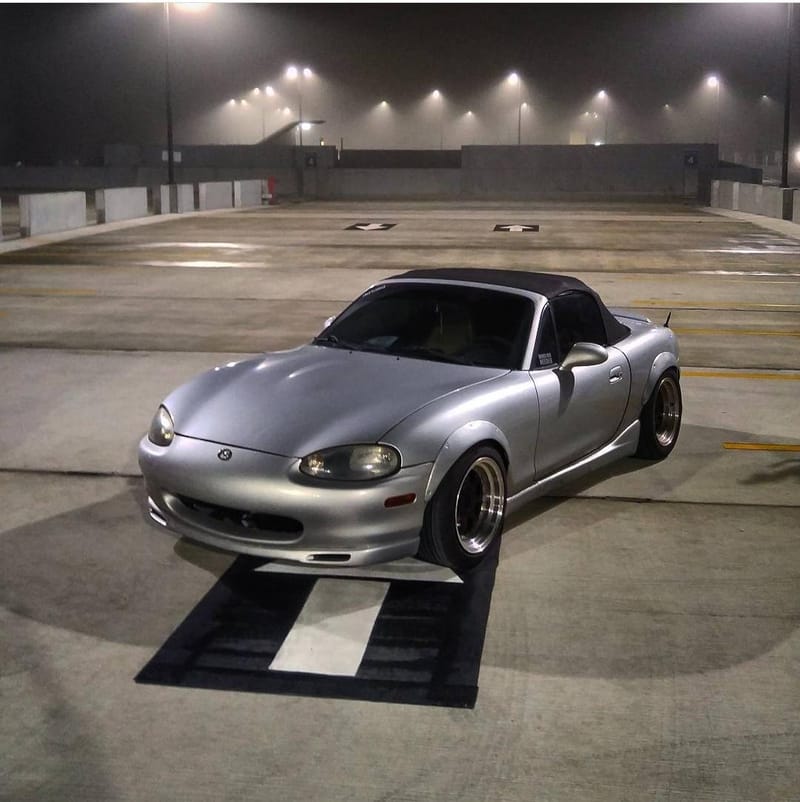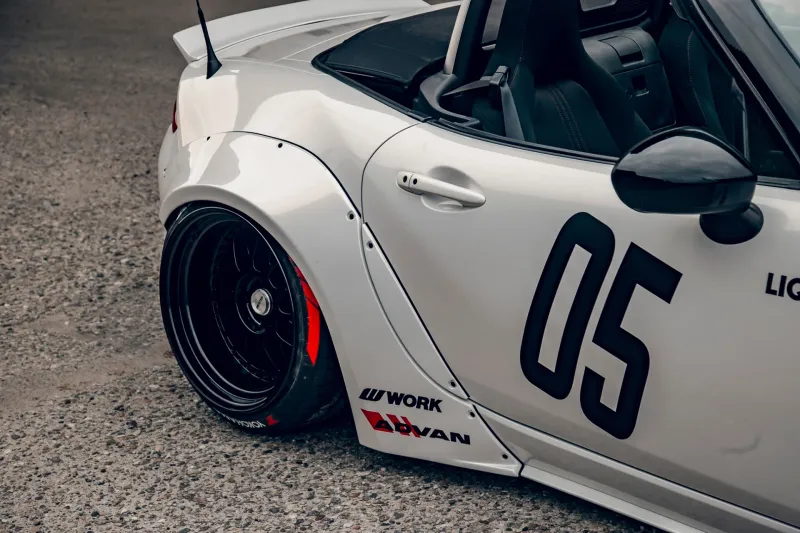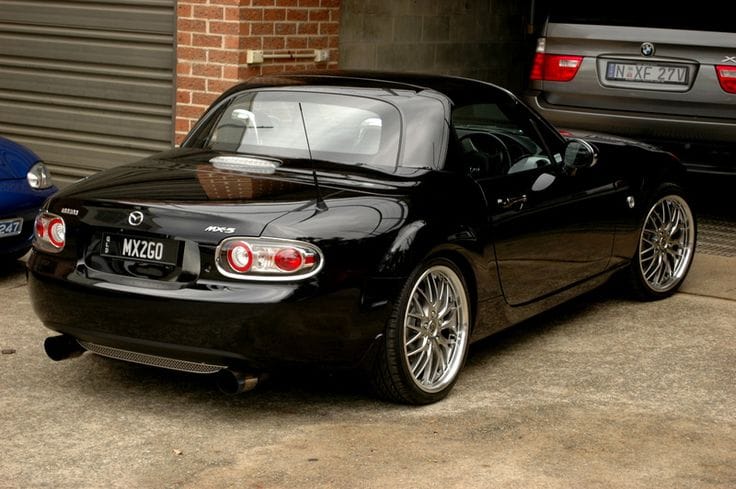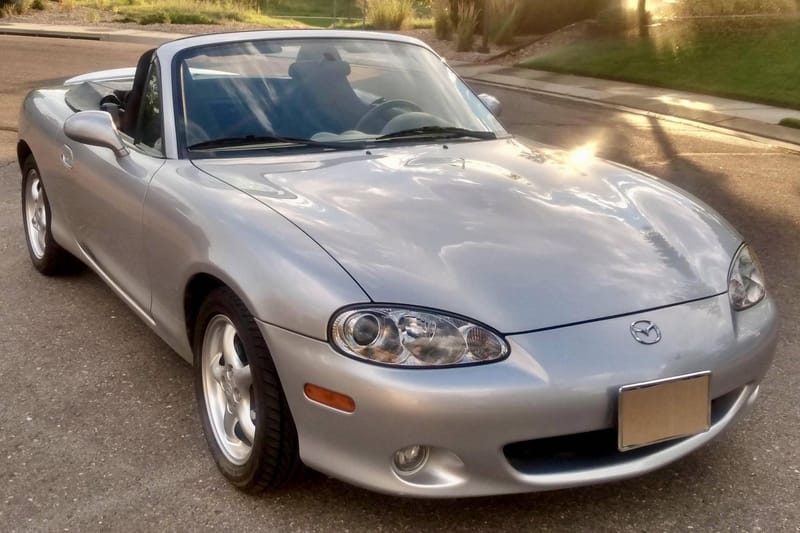Understanding Miata Differentials and Gear Ratios
Having offered various diff options, each affecting performance. Understanding open vs. limited-slip differentials (LSDs) helps optimize traction and handling. Learn how to identify, compare, and upgrade your Miata’s differential for the perfect driving experience.
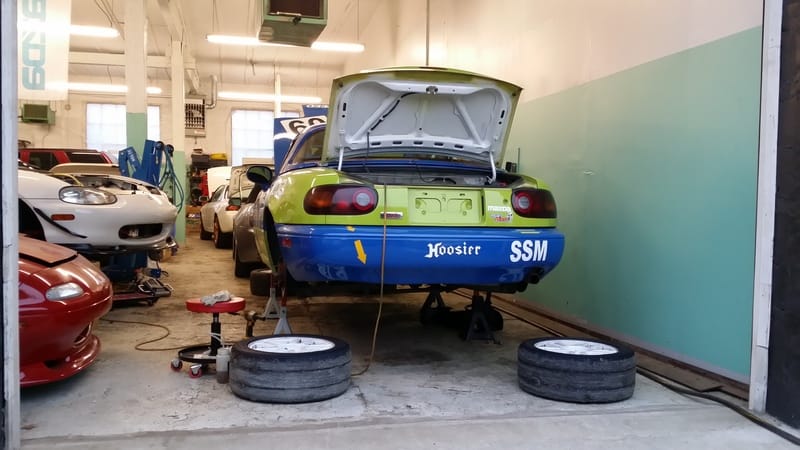
If there’s one topic that can keep Miata enthusiasts chatting for hours, it’s differentials, especially when gear ratios get thrown into the mix. You might think a tiny, lightweight sports car like the Miata would have a straightforward setup, but Mazda actually offered a surprising variety of diff types and ratios from 1990 to 2005. Sorting through which ones you have, or which ones you want, can feel a bit overwhelming. Fear not! In this guide, we’ll walk through how Miata differentials work, how to identify them, the pros and cons of each, and the best approach if you’re thinking of upgrading. Let’s dive in.
Differential Basics: The “Why” and “How”
What a Differential Does
Picture your Miata going around a tight corner. The outside rear wheel travels a slightly longer path than the inside rear wheel. If both wheels were forced to turn at the same speed (as if they were locked together), the inside wheel would either drag or the car would understeer, neither is ideal for smooth handling. A differential solves this by allowing each wheel to rotate at a speed that suits its path around the turn.
Still, differentials vary in how they manage torque transfer when one wheel loses grip. An open differential will give nearly all the power to the spinning wheel, whereas a limited-slip differential (LSD) uses internal mechanisms, clutches, gears, or fluid coupling, to make sure the wheel with better traction gets a bigger share of the torque.
Open vs. Limited-Slip Differentials
An open differential is the simplest design. It’s cheap, easy to live with day-to-day, and works fine as long as both wheels have roughly equal traction. The moment one wheel slips, though, the open diff funnels power straight to that slipping wheel. That’s why “one-tire fire” is a thing. A limited-slip diff, on the other hand, ensures some torque still makes it to the wheel that has grip. For Miatas, LSDs come in various forms (Torsen, viscous, Fuji, clutch-pack), each with its own feel and performance characteristics.

A Brief History of Miata Differentials
Mazda produced two main ring gear sizes for the NA (1990–1997) and NB (1999–2005) Miatas. The smaller 6-inch ring gear was used in all 1.6L cars from 1990 to 1993, while the bigger 7-inch ring gear came in all 1.8L Miatas from 1994 to 2005. These subsets each have open diff options as well as a selection of limited-slip units. Identifying which size ring gear you have is a huge step in figuring out what you can swap in or out.
The 1.6 Miata (1990–1993): 6-Inch Ring Gear
All 1.6 Miatas left the factory with a 4.30:1 gear ratio and the same small 6-inch ring gear. However, they weren’t all LSD-equipped. Some had open diffs, others had a viscous LSD (VLSD).

A 1.6 open diff is pretty straightforward: it’s cheap, it’s simple, but it’s not great for performance if you’re trying to put the power down on a slippery surface or out of a corner. The VLSD uses a sealed silicone fluid. When one wheel spins faster, that fluid thickens and offers resistance, transferring some torque to the slower wheel. It’s an improvement over an open diff in mild slip situations, like rain or light snow, but it’s not as aggressive or predictable as other LSD designs.
The 6-inch diffs themselves can handle around 200 horsepower if you don’t abuse them with clutch dumps or severe wheel hop. Still, many folks looking for serious track use or forced induction will upgrade to the stronger 1.8 setup, as the 1.6 ring gear can become a weak link when pushed hard.
The 1.8 Miata (1994–2005): 7-Inch Ring Gear
Once Mazda introduced the 1.8-liter engine in 1994, they paired it with a larger 7-inch ring gear. This setup spans all 1.8 NA (1994–1997) and NB (1999–2005) Miatas, making it the go-to choice for anyone wanting a sturdier diff. Many of these 7-inch diffs survive 300–400 horsepower in well-driven cars that avoid too much wheel hop or violent launches. Another bonus is that Mazda offered multiple gear ratios across different models and regions, so it’s often easier to find drop-in alternatives.
The 1.8 lineup includes open diffs, Torsen LSDs (Type I and Type II), Fuji (Tokyō Roki) Super LSDs, and the Mazdaspeed LSD found in the 2004–2005 Mazdaspeed Miata (MSM). Torsen diffs are helical-gear-based, widely praised for strength and zero maintenance. Fuji diffs use conical friction surfaces, offering a similar feel to the Torsen but with a bit more preload for tricky traction situations. Mazdaspeed Miatas come with a beefed-up LSD and also larger axles and hubs, so you’d need those parts if you wanted to swap that entire setup into a regular NB.
Gear Ratios Explained
A differential’s gear ratio tells you how many times the driveshaft (pinion) has to rotate for one full turn of the wheels. A 4.30 ratio means 4.30 driveshaft revolutions per one wheel revolution. Higher ratios (like 4.30, 4.44, 4.77) boost low-end acceleration but also mean higher revs on the highway. Lower ratios (3.63, 3.90, 4.10) reduce RPM at cruising speeds but slightly soften that initial punch.
Common gear ratios on 1.8 cars in North America include 4.10, 4.30, 3.90, and occasionally 3.63 in certain overseas models. You can do a quick “spin test” by counting how many turns of the pinion flange it takes to rotate the axle once. If you’re close to four turns, you likely have a 4.10 ratio, etc.

Identifying LSD vs. Open on a Miata
Visually, open diffs generally have a cross-shaft visible when looking through the axle holes. Torsen diffs, on the other hand, show gear teeth and no cross-shaft. A 1.6 viscous LSD is identified by different-length stub axles (the driver’s side stub being longer). The Fuji Super LSD can sometimes look tricky to identify by eye, so some folks rely on official part numbers or partial disassembly to confirm.
A common “jack & turn test” works for clutch-based LSDs (both wheels move in the same direction if you spin one while in the air), but Torsen diffs can still spin the other wheel in the opposite direction, so that test can be misleading. Ultimately, the most reliable method is to look inside the diff or compare specific identifying features against a known reference guide.
LSD Types in Detail
Torsen (Helical Worm Gear):
Torsens are almost legendary for being strong and for needing no special maintenance. They work by using worm gears to sense torque difference and transfer power to the wheel with better grip. If one wheel is fully unloaded, though, a Torsen alone can’t apply torque to the other side, some drivers lightly press the brakes or pull the handbrake to give the free wheel some load, which helps re-engage the torque multiplication.
Fuji/Tokyō Roki Super LSD:
These diffs use conical friction surfaces and can feel a lot like a Torsen but are slightly better if one wheel is momentarily unweighted. Many owners barely notice a difference in everyday use, but on track, you might appreciate the extra preload. Maintenance is similarly low-key: just standard gear oil.
Viscous LSD (1.6 Only):
A VLSD relies on silicone fluid sealed inside the diff. It provides mild lock-up when one wheel starts to spin faster than the other, but it’s not as robust for high-performance or high-heat scenarios. If it’s worn out internally, there isn’t an easy or cheap rebuild option, so many enthusiasts just swap it out for something else.
Clutch-Pack LSD (Aftermarket):
Brands like OS Giken and Kaaz use multiple clutch discs to lock the half-shafts together under load. This can give very strong traction, even in aggressive track or drift scenarios, but it can add a bit of understeer on corner entry because it’s partially locked even off-throttle. Clutch-pack LSDs need specialty gear oils and periodic clutch-disc maintenance if you’re hammering them at the track all the time.
Which LSD Is Best for Your Needs?
For everyday street driving and mild track use, a factory Torsen or Fuji LSD is more than enough, especially if you’re running naturally aspirated up to around 250 horsepower. They’re durable, quiet, and basically maintenance-free.
If you’re going for high horsepower or you keep lifting a rear wheel on corner curbs, a clutch-pack LSD can offer the best corner-exit bite. You do have to factor in more frequent fluid changes and potential rebuilds, though.
If you’re a 1.6 owner on a budget, finding a used 1.6 VLSD is a small upgrade over open, but some folks skip right to swapping in the 7-inch 1.8 setup for greater strength and ratio options. If you autocross casually, a Torsen LSD is likely plenty, but serious national-level autocrossers sometimes prefer the more aggressive lock-up of a clutch LSD, just be mindful of the class rules that might limit which diffs are legal.
Swapping Differentials
1.6 → 1.8 Swap:
This is a well-worn path. You need the entire 1.8 differential assembly, including the axles (which have different splines and lengths) and the shorter 1.8 driveshaft. Everything bolts up under an NA subframe with a little fiddling of the power plant frame (PPF). You’ll instantly gain a stronger diff and more LSD choices if you pick up a Torsen or Fuji unit.
NB to NB LSD Upgrades:
If your NB is open or has a worn-out diff, you can swap in a different NB “pumpkin” or just install a new LSD center section into your existing housing. Either approach requires properly setting up the ring and pinion, so factor in some professional labor or patience if you’re tackling it yourself. Some folks also reinforce the diff’s front “arm,” which can crack under high-power track use.
Maintenance and Rebuild Notes
Fluids and Additives:
For open, Torsen, and Fuji LSDs, standard GL-5 75W-90 gear oil works great. Clutch-pack diffs usually call for LSD-friendly oils that can have friction modifiers. Viscous diffs are sealed for the LSD portion, so they just need the usual gear oil in the housing.
Service Intervals:
On a street-driven Miata, a 30,000–60,000-mile interval for changing diff oil is common. Track drivers often do it every season or every few track events. Keep an eye on axle and pinion seals for leaks, running low on fluid can do serious damage.

Rebuilding Torsens and Clutch Diffs:
Torsens are considered “lifetime” for most normal driving, though in extremely high-mile or track-only cars, the internal washers can eventually wear. Meanwhile, clutch-pack diffs will need the friction discs replaced when they get worn, which happens faster if you do drifting or endurance racing. Plan on occasional rebuilds if you go that route.
Ring & Pinion Setup: Avoiding the “Whine”
Changing your final drive ratio, say, from 4.10 to 3.90, requires precise setup of pinion depth, backlash, and gear contact pattern. If you don’t do this properly, you can end up with annoying gear whine or even premature failure. That’s why many owners buy a complete used “chunk” that’s already set up. If you’re set on a custom ratio, let a pro handle the gear mesh so you don’t run into noisy or broken gears down the line.
Speedometer Calibration
NA and NB Miatas expect a certain final drive ratio, so if you swap in a different ratio, your speedometer could read off. You can change the little plastic gear in the transmission if you can source the right tooth count, or you can use an electronic calibrator (more relevant for later NB models). Some folks also install custom gauge faces with adjusted markings, which is a fun cosmetic approach if you like that style.
Frequently Asked Questions
Q1. If one rear wheel is totally off the ground, does a Torsen diff fail to propel the car forward?
Yes, a Torsen can’t multiply zero torque, so if one wheel is truly at zero traction, it behaves like an open diff. Lightly applying the brakes can help by adding resistance to the spinning wheel, which “tricks” the Torsen into sending torque to the wheel on the ground.
Q2. Do 1.6 Miata differentials break easily under stock power?
They’re fine for normal street use and moderate track driving. But repeated clutch drops and severe wheel hop can lead to ring gear damage. If you’re planning on big power or a lot of hard launches, upgrading to a 1.8 diff is safer.
Q3. Which gear ratio is best?
It’s subjective. Shorter ratios like 4.30 are fun for quick acceleration but can make the engine scream on the highway. Taller ratios like 3.63 or 3.90 are more relaxed at cruising speeds and can help turbo cars manage wheelspin better.
Q4. Any tips for removing stuck half-shafts?
You can use two pry bars or an “axle popper” tool, applying simultaneous force on both sides of the axle to pop the internal circlip free. A swift, even pry is usually the trick.
Q5. Can I use an ND (2016+) Miata diff on an older NA or NB?
No. The ND’s entire rear subframe and mounting points are different. It’s not a bolt-in job at all, so it’s typically not worth pursuing unless you’re ready to do major custom fabrication.
Putting It All Together
If you have a 1.6 Miata, the simplest LSD option is the 1.6 viscous unit, but it may not be worth the effort unless it’s super cheap. A full 1.8 Torsen or Fuji swap can give you more ratio choices and better strength. For 1.8 Miatas, check if you already have a Torsen or Fuji LSD; both are fantastic for everyday or light track use. If you push big horsepower or keep unloading a rear wheel, an aftermarket clutch-pack LSD might be the best bet for extra lock-up.
When it comes to gear ratios, think about where you do most of your driving. Autocross and twisty roads can be more fun with a 4.30, while turbo or frequent highway driving might be happier with a 3.90 or even a 3.63. Just be prepared to adjust your speedometer if you go changing final drives. Ultimately, a well-chosen and well-maintained differential will make your Miata feel like an extension of your driving style, whether that’s relaxed daily commuting, spirited weekend canyon carving, or all-out track domination.
Your Miata’s differential is more than just a lump of metal hanging off the rear subframe; it plays a huge role in how the car handles, accelerates, and behaves at the limit. From the early viscous LSD in 1.6 cars to the rock-solid Torsens and Fuji diffs in 1.8 cars, Mazda has given us a healthy range of choices. Throw in aftermarket clutch-pack options, and you can tailor exactly how your Miata puts power to the ground.
In the end, it all boils down to your goals. Keep it simple and stock for a fun street car, or go hardcore if you plan to push your Miata’s limits at the track. Either way, a good diff will help you power out of corners with confidence and keep that signature Miata grin on your face. Happy wrenching and even happier driving!

